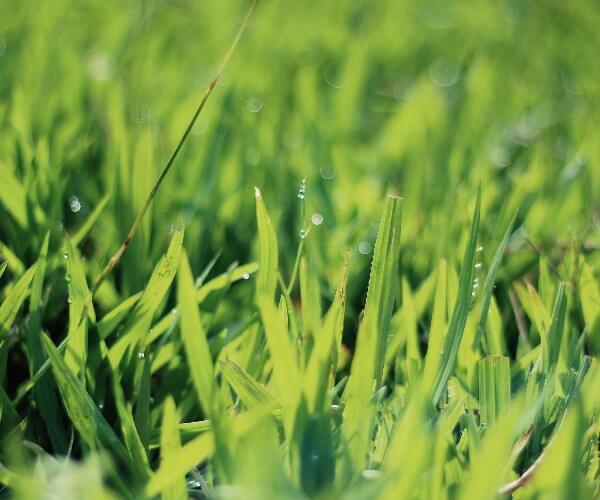- Turf
- Artificial
- Soil
- Timber
- Composite Decking
- Paving & Stone
Get In Touch With Our Experts Today!
Give us a Call! - Seed & Fertiliser
- Dressing
- Bark

May marks a turning point with lawn growth accelerating rapidly! Plants are working hard to thrive, and you will want to ensure your garden is ready for summer. So, how can you support your lawn’s health and appearance during May to create the luscious lawn you long for?
This article is perfect for homeowners and landscapers looking to create the perfect summer lawn. Keep reading to note our top turf tips to complete in May.
May marks a month of improvement in terms of lawn growth. It allows avid gardeners to kick into gear, spending more time outdoors to create beautiful spaces for summer barbecues and evenings spent beneath the stars. But there are plenty of tasks you can tick off your garden jobs list now, to help your lawn later on.
With the combination of warmer temperatures and spring showers, your lawn will be experiencing several growth spurts! This is a great sign. But to keep your turf in top condition, keep on top of your mowing. Aim to mow little and often, keeping your blades sharp and mowing height high (around 25-40mm). Regular mowing will encourage healthier lawns and minimise weed or pest infestation or lawn diseases.
Domestic lawns can be mowed twice weekly, dropping to once per week during periods of drought. You can collect your grass clippings or leave them to decompose, returning nutrients back into the soil (this is what also leaves that fresh cut grass smell!)
Your lawn’s success is primarily determined by its soil. One common cause of poor lawn growth is compacted soil – without gaps within the soil, water, oxygen or essential nutrients can’t reach the roots and feed your lawn. By aerating your lawn, you help encourage deep root growth, resulting in a stronger, more robust lawn.
The three major soil types are sandy, loam, and clay; however, many soils fall somewhere in between, such as sandy loam and clay loam. Loam soil is ideal for general gardening and lawn care because it contains all the required components and has the proper structure for strong, healthy lawns.
The downside of the gloriously warm and sunny weather is that it encourages weeds to thrive too. Now, more than ever, is the best time to get on top of your weeds, before they take over! Individual weeds can often be plucked out by hand. For larger weed infestations, use a weed killer – if this impacts your lawn, you can follow up with a feed and seed programme to regrow that area.
To boost grass growth during May, look for a spring fertiliser like Envy Fertiliser. Spring fertilisers are specially designed and often include nitrogen to increase blade growth and resilience. Fertiliser helps lawns recover after winter and is an ideal supplement to keep in your garden shed.
As temperatures rise, so do evaporation rates, and your soil and turf will start to dry out. Watering your lawn is one of the most crucial aspects of lawn care. But you want to get the balance just right for your lawn to benefit.
A lot of it does come down to judgment. For example, if we have had rain for a week, you don’t need to water anymore. If you notice your lawn thinning, weakening or changing colour during drier periods, it may require a good drink.
May is usually a relatively dry month. The entire UK averages ten days of rain in May, totalling 58 millimetres (2.3 inches), so as soon as you spot signs your soil is dry, it is best to water thoroughly before the grass turns yellow or brown. Always aim to water your lawn in the morning or evening when temperatures are cooler. If it is a peculiar month with more rainfall (let’s hope not), then you will want nature to run its course.
With steady growth, bald patches will become more evident across your lawn. To repair these areas in time for summer, apply a layer of grass seed onto the area. You can add a thin layer of topsoil to keep the seeds in place (and stop the birds eating them), and water the grass seeds into place. Corner off the area to avoid any foot or pet traffic, giving your seeds the best chance to establish and grow.
Absolutely! May is a popular month for turf laying due to the nice weather. This means the soil is at a good temperature, and the air temperature isn’t too high to risk scorching or drying out your fresh turf. Our guide to laying turf will tell you everything you need to know, but our top tips include:
We have a fantastic range of turf suited to your landscaping needs:
Getting ahead of your turf in May sets the stage for a lush, healthy lawn all summer long. Whether preparing new turf or maintaining an established lawn, the time and effort you put in this month pays off tenfold! Need extra turf advice or fresh turf delivered? We’ve got you covered – give our friendly customer service team a call.
For Trade Customers, be sure to take advantage of our George Davies Trade Account for additional support and benefits.
How to Stop Birds from Eating Your Grass Seeds
How Often Should You Water New Turf?
How to Fix Dry & Brown Patches